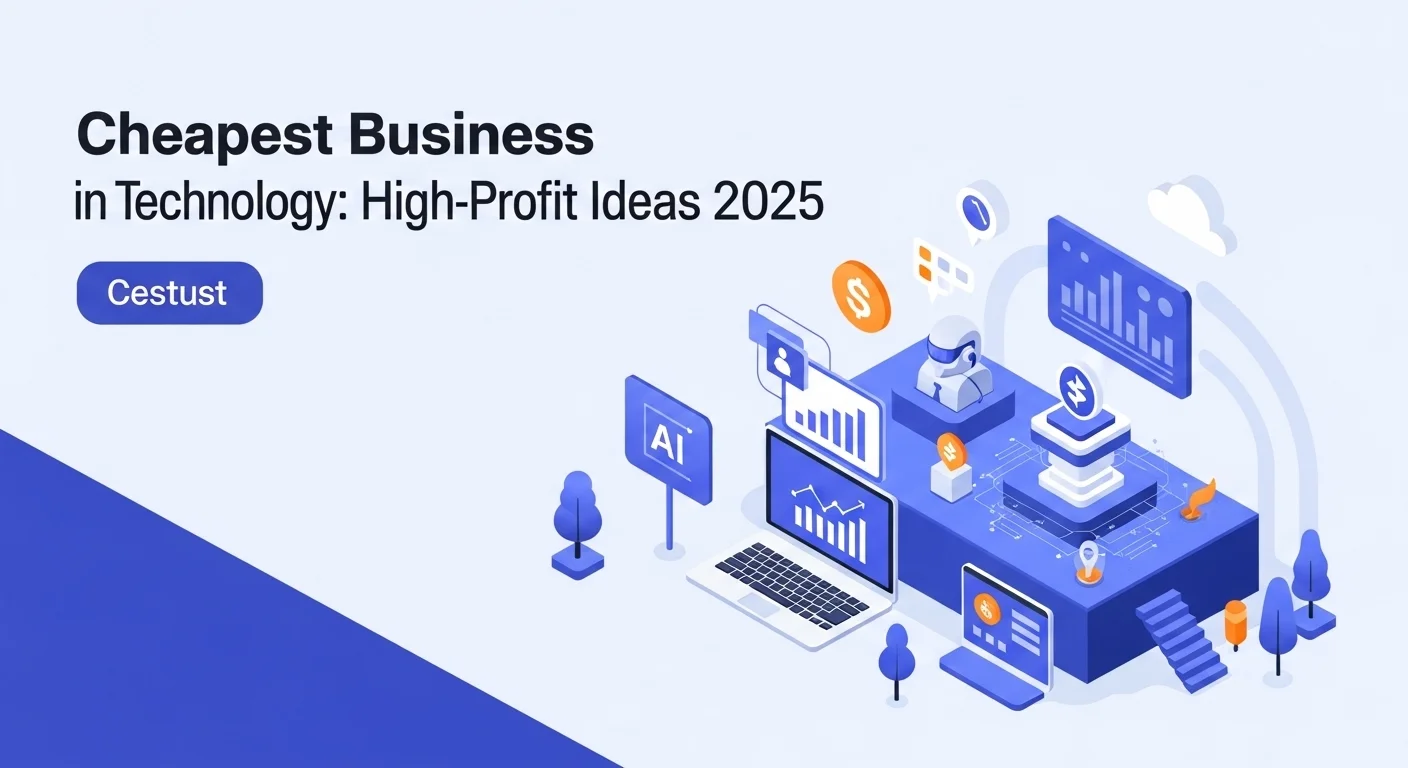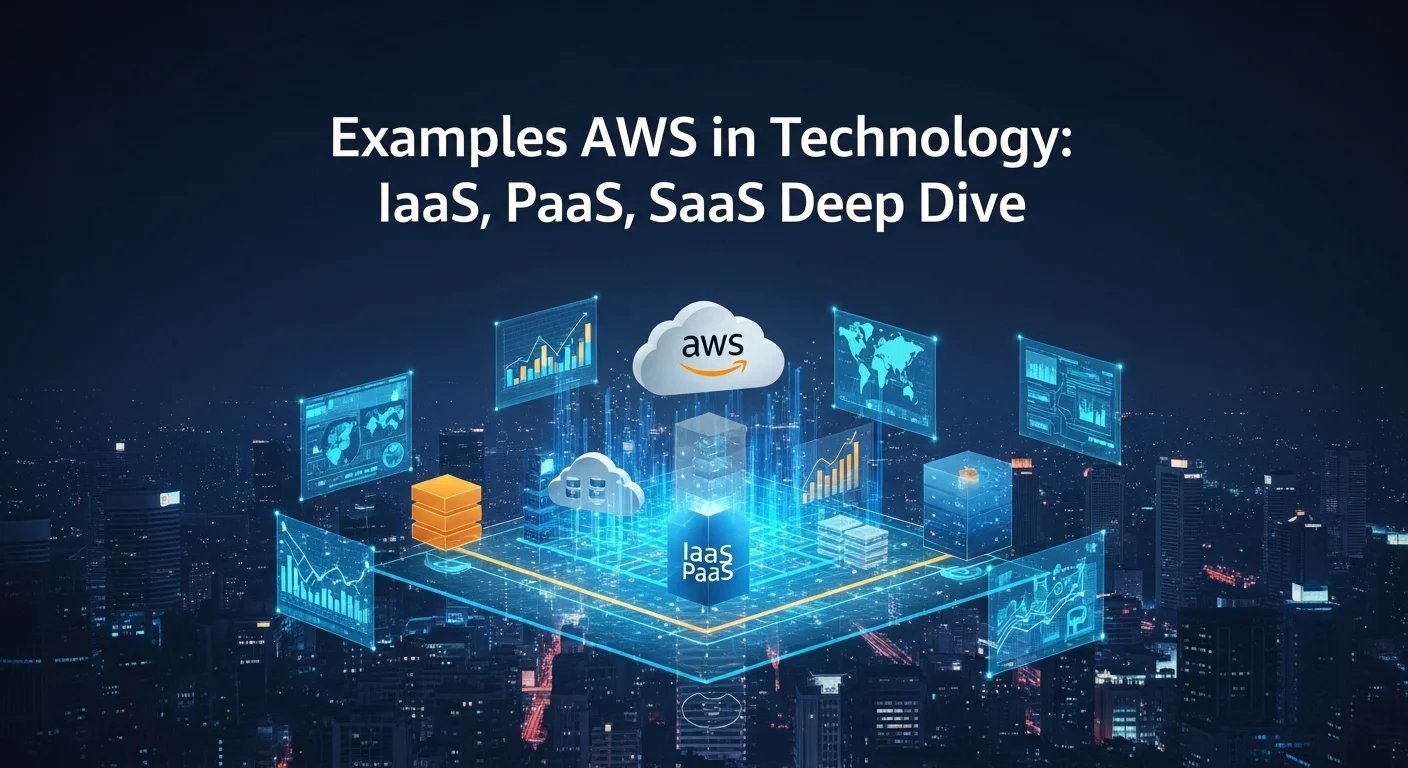Cloud Technology Explained: How to Power Your Business with the Cloud
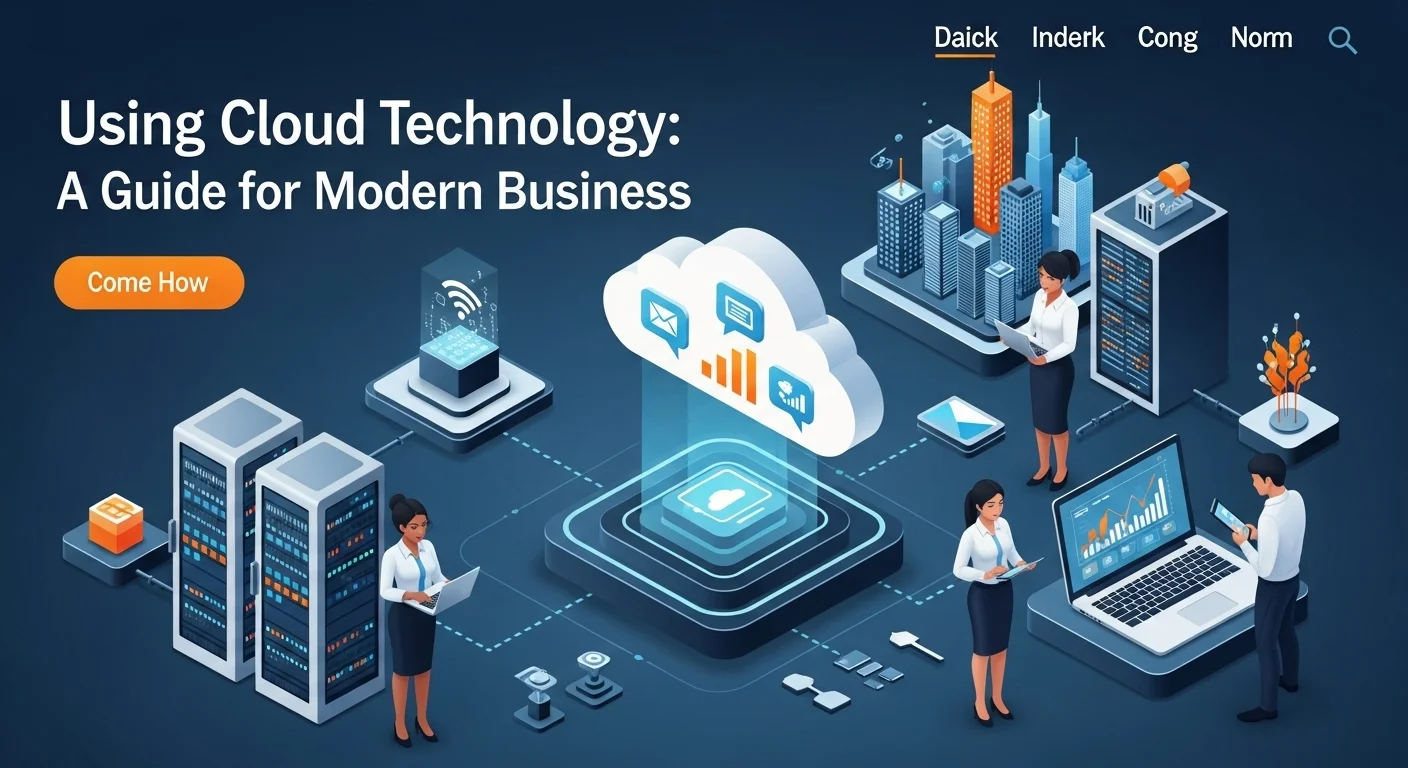
Executive Summary
Over my 15 years as a cloud strategist, I've seen 'the cloud' go from a buzzword to the single most powerful engine for business growth. But I've also seen how confusing it can be. What does it actually mean to be 'using the cloud'? Is it right for your business? This guide is my attempt to cut through the noise. I'll walk you through the essentials in simple terms, sharing stories from companies—big and small—that have used cloud services to completely transform their work. We'll look at the key services like IaaS, PaaS, and SaaS (I promise to make it make sense!) and pinpoint the real-world benefits like cost savings, incredible flexibility, and top-tier security. Whether you're a startup founder, a seasoned executive, or just tech-curious, my goal is to give you the confidence to harness the power of the cloud.
Table of Contents
Table of Contents
- What is the Cloud and Why Does It Matter?
- The Core Concepts: IaaS, PaaS, and SaaS Made Simple
- Who Really Benefits from Using the Cloud?
- Exploring the Most Popular Cloud Services
- Choosing Your Path: Public, Private, or Hybrid Cloud
- Strategic Migration: How to Move to the Cloud
- Business Techniques for Cloud Success
- Available Resources and Provider Comparisons
- Mastering Cloud Security and Compliance
- Optimizing for Performance and Cost
- Advanced Strategies and Future-Proofing Your Business
What is the Cloud and Why Does It Matter?
In today's world, you hear the word 'cloud' everywhere. But what does it actually mean? Think of it this way: instead of buying and running your own powerful computers (servers) in your office closet, you're essentially renting computing power, storage, and software from massive, specialized data centers owned by companies like Amazon, Microsoft, or Google. You access all of it over the internet. I remember the days when starting a new project meant waiting weeks for hardware to be ordered and set up. Now, with the cloud, you can spin up the resources you need in minutes. This shift is monumental. It gives businesses incredible agility to experiment, launch new products, and expand globally without needing a huge upfront investment in physical gear. For me, the biggest game-changer is the 'pay-as-you-go' model. You only pay for what you use, which has leveled the playing field and allowed small businesses to compete with giants by accessing the same powerful technology.
The Core Concepts: IaaS, PaaS, and SaaS Made Simple
To really get a handle on the cloud, you need to know about its three main service models. The easiest way I've found to explain them is the 'Pizza as a Service' analogy.
- Infrastructure as a Service (IaaS): This is like being given a professional kitchen with an oven, counters, and ingredients. You have full control to make any kind of pizza you want, but you have to manage the cooking process yourself. In tech terms, this gives you the fundamental building blocks—virtual servers (like Amazon EC2), storage, and networks. It offers the most flexibility and is for those who want deep control over their infrastructure.
- Platform as a Service (PaaS): This is like a pizza delivery service where they provide the dough and toppings, and you just assemble and bake it at home. It removes the hassle of managing the underlying infrastructure, so you can focus purely on building and running your applications. Services like Heroku or AWS Elastic Beanstalk are perfect for developers who just want to deploy code without worrying about the servers.
- Software as a Service (SaaS): This is the simplest model—you just order a fully cooked pizza delivered to your door. You don't manage anything; you just enjoy the final product. SaaS delivers ready-to-use software over the internet, usually on a subscription. You use these every day: think Google Workspace, Salesforce, or Dropbox. Most businesses I work with end up using a mix of all three to meet different needs.
Who Really Benefits from Using the Cloud?
Honestly? Pretty much everyone. I've helped everyone from solo entrepreneurs to Fortune 500 companies find value in the cloud. For small businesses, it's a dream come true. They get access to enterprise-level tools, from accounting software to advanced security, without the crippling cost. It lets them punch way above their weight. For large enterprises, the cloud offers the sheer scale needed to handle enormous amounts of data and support millions of users. Look at Netflix. They rely completely on Amazon Web Services (AWS) to stream movies to you. Without the cloud's scalability, their business model simply wouldn't be possible. I've seen financial firms use the cloud to detect fraud in milliseconds and healthcare organizations use it to securely manage patient data and develop new treatments. The beauty of the cloud is its versatility; its services can be tailored to solve the unique challenges of any industry.
Exploring the Most Popular Cloud Services
Beyond the three main models, the world of cloud services is huge and always growing. Here are the services I see businesses using most effectively:
- Compute: This is the engine room. It provides the processing power for your applications, either through virtual machines you manage or through 'serverless' functions that let you run code without thinking about servers at all. Serverless is a real game-changer for efficiency.
- Storage: Cloud storage services like Amazon S3 or Google Cloud Storage are incredibly reliable places to keep everything from website images and backups to massive datasets for analysis.
- Databases: Instead of managing your own complex databases, you can use managed cloud services that handle all the tedious work like backups, patches, and scaling for you. This frees up your tech team to focus on more important things.
- Networking: These services allow you to build your own secure, private section of the cloud, controlling traffic and connecting your cloud resources to your offices safely.
- Artificial Intelligence (AI) and Machine Learning (ML): This is where things get really exciting. Cloud platforms have made powerful AI tools accessible to everyone. You can add image recognition, automated text translation, or predictive analytics to your applications without needing a team of PhDs.
- Analytics and Big Data: The cloud provides amazing tools to sift through huge amounts of data and find valuable business insights. It’s how companies learn what their customers truly want.
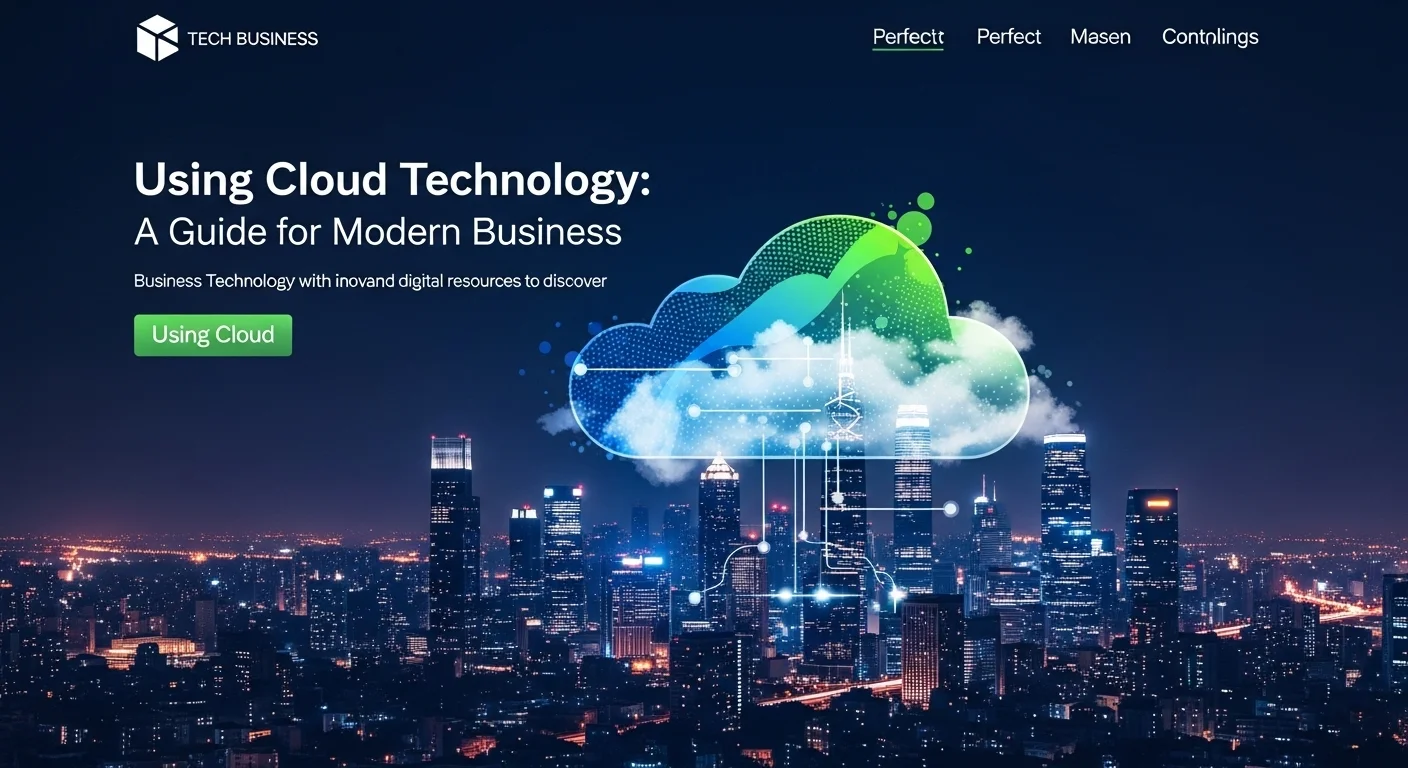
Complete guide to Using Cloud in Technology and Business Solutions
Making the move to the cloud is a strategic journey. It's not just about technology; it's about reshaping your business for the future. As a consultant, I guide companies through this process, focusing on smart planning and practical techniques that deliver real results. Here’s how you can do it right.
Choosing Your Path: Cloud Deployment Models and Providers
First, you need to decide on the right environment for your needs. There are three main flavors:
- Public Cloud: This is the most common path. You use resources on a cloud platform like AWS, Azure, or Google Cloud, sharing the hardware with other 'tenants.' It’s incredibly scalable and cost-effective, making it perfect for websites, new applications, and workloads that have busy and quiet periods.
- Private Cloud: This is a cloud environment dedicated solely to your organization. You get maximum control and security, which is often a requirement for businesses in finance or healthcare with strict compliance rules. You can build it in your own data center or have a third party host it for you.
- Hybrid Cloud: This is the best of both worlds. You connect a public and a private cloud, letting you keep sensitive data secure in your private environment while using the public cloud's power for less critical tasks. I see this a lot with established companies that want to innovate without completely overhauling their existing systems.
Strategic Migration: Moving to the Cloud
Moving your existing applications to the cloud isn't a simple copy-paste job. I use a framework known as the '6 R's' to help clients figure out the best approach for each application:
- Rehost (Lift and Shift): Move the application as-is. It's fast, but you won't get all the cloud benefits.
- Replatform (Lift and Tinker): Make some small adjustments during the move to get a quick win, like switching to a managed database service.
- Repurchase (Drop and Shop): Ditch your old software and move to a ready-made SaaS product, like switching from an on-premise email server to Google Workspace.
- Refactor / Re-architect: Completely redesign the application to take full advantage of cloud-native features. This is the most work but delivers the biggest rewards in performance and cost savings.
- Retire: Turn off applications you no longer need. You'd be surprised how many companies are paying to maintain useless software!
- Retain: Keep some applications where they are for now, often as part of a hybrid strategy.
Business Techniques for Cloud Success
Cloud adoption is a business transformation, not just an IT one. To truly succeed, you need to change how you think. The most important shift is embracing FinOps (Cloud Financial Management). Since cloud costs are variable, FinOps is the practice of making everyone responsible for their piece of the bill. It fosters a culture where teams make smart trade-offs between speed, quality, and cost. The other key is a DevOps culture. DevOps and the cloud are a perfect match. The cloud provides the automated tools, and DevOps provides the agile process to deliver better software, faster. Finally, use the cloud to become a data-driven company. The analytics and AI services on these platforms are incredible. I've seen marketing teams revolutionize their campaigns and finance teams build sophisticated risk models, all using tools that were once out of reach.
Available Resources and Provider Comparisons
You're not alone on this journey. The cloud providers offer fantastic documentation, free trials, and professional certifications to help you learn. Online platforms like Coursera and A Cloud Guru have courses on every cloud topic imaginable. When comparing providers, look beyond the basics. While AWS has the most services, Azure’s seamless integration with Microsoft 365 can be a huge advantage for many businesses. And GCP's expertise in Kubernetes and big data is unmatched. My advice is always to run small pilot projects. Test the services you're interested in from different providers to see which one feels right for your team and meets your business needs before making a huge commitment.
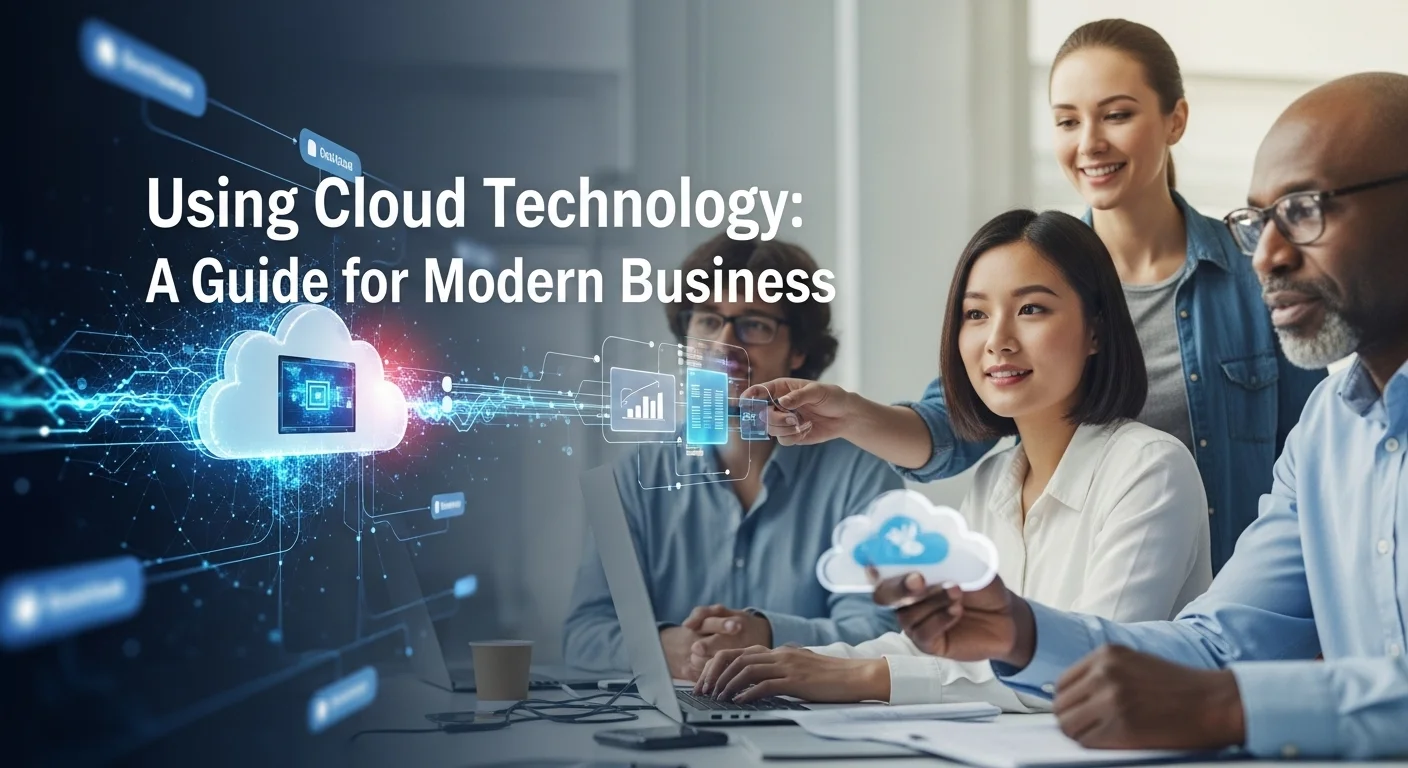
Tips and strategies for Using Cloud to improve your Technology experience
Getting to the cloud is just the beginning. The real magic happens when you start optimizing and refining your strategy to ensure you're getting the most value out of your investment. This is where you transform your cloud presence from just a server replacement into a true competitive advantage. Here are the tips and strategies I share with all my clients to help them master their cloud experience.
Mastering Cloud Security and Compliance
Security is the number one concern I hear, and rightly so. It's crucial to understand the 'Shared Responsibility Model': the cloud provider secures the cloud itself (their physical data centers), but you are responsible for securing what you put *in* the cloud (your data, users, and configurations). Here’s your security checklist:
- Lock Down Your Access: Always follow the 'principle of least privilege.' Only give people and services the bare minimum permissions they need to do their job. Always, always enforce Multi-Factor Authentication (MFA), especially for admin accounts.
- Encrypt Everything: Encrypt your sensitive data both when it's being stored (at rest) and when it's moving over the internet (in transit). This is non-negotiable.
- Build Virtual Walls: Use network security tools like Virtual Private Clouds (VPCs) and security groups to create isolated segments for your applications. Think of them as digital bouncers, controlling exactly who and what gets in or out.
- Keep an Eye on Things: Turn on detailed logging for all your services. Use monitoring tools to get real-time alerts for any strange activity. Regularly review your logs—it's the only way to catch issues before they become disasters.
- Stay Compliant: If you're in a regulated industry like healthcare (HIPAA) or finance (PCI DSS), use the compliance tools and documentation your cloud provider offers. They’ve done a lot of the heavy lifting to make it easier for you to meet these strict standards.
Optimizing for Performance and Cost
The cloud's pay-as-you-go model is great, but it can lead to surprise bills if you're not careful. Cost optimization is a continuous process, not a one-time task.
- Live and Breathe FinOps: Use your provider's cost management tools every single day. Set budgets and alerts. Most importantly, 'tag' all your resources. Tagging lets you see exactly which project, team, or feature is costing how much money.
- Right-Size and Auto-Scale: I constantly see clients paying for huge servers that are barely being used. Monitor your usage and shrink over-provisioned resources. Use autoscaling to automatically add capacity during peak times and, more importantly, remove it during quiet times so you're not paying for idle power.
- Use Smart Storage: Cloud storage services like Amazon S3 or Google Cloud Storage are incredibly reliable places to keep everything from website images and backups to massive datasets for analysis.
- Let the Provider Do the Work: Shifting to serverless or managed services often lowers your total costs because you stop paying for idle time and your team spends less time on tedious maintenance.
Advanced Strategies and Future-Proofing Your Business
Ready to level up? To truly master the cloud, you need to embrace more advanced concepts.
- Infrastructure as Code (IaC): Use tools like Terraform or CloudFormation to manage your infrastructure with code. This automates your setups, prevents human error, and makes your entire system repeatable and transparent. It's a foundational practice for any serious cloud operation.
- Build for Resilience: The cloud makes disaster recovery (DR) easier than ever. You can set up strategies to keep your business running even if an entire data center region goes down. Don't just plan it—test it regularly!
- Innovate with AI/ML: Don't just use the cloud to host old applications. Dive into the AI and Machine Learning services. I've seen companies build recommendation engines that skyrocket sales or predictive models that prevent costly equipment failures. This is where you create real, new value.
- Look to the Edge: Keep an eye on emerging trends like Edge Computing, which moves computing power closer to where data is created (like in a factory or a retail store). It will work hand-in-hand with the cloud to power the next wave of real-time applications.
Expert Reviews & Testimonials
Sarah Johnson, Business Owner ⭐⭐⭐
This was a helpful overview of the cloud. As a small shop owner, I wish there was a section dedicated to non-tech businesses and the simplest first steps we could take.
Mike Chen, IT Consultant ⭐⭐⭐⭐
Solid article. I'm an IT guy, and this is a great resource to share with clients who are new to the cloud. It explains the core models like IaaS and PaaS really clearly without getting too bogged down in technical details.
Emma Davis, Tech Expert ⭐⭐⭐⭐⭐
Fantastic and thorough guide! As a developer, I appreciated the breakdown of migration strategies and the look ahead at IaC and AI/ML services. It connects the dots from basic concepts to advanced implementation perfectly.

